Many people think that wild boars are declining in number, but that is not the case. According to the data at the end of 2013, there are estimated to be about 980,000 wild boars, which is more than three times the population in 1989. The damage has become more serious and spread over a wider area, and even in urban areas, there have been reports of damage such as "garbage being destroyed," "garbage being scavenged," and "shopping bags being stolen by wild boars."
There is also the risk of personal injury from being attacked by wild boars. Wild boars are naturally nervous and timid, but they have a very strong rushing power, and even adults can be thrown off and seriously injured. There have even been cases of people being attacked and killed in their own gardens ( click to jump to the Asahi Shimbun article ).
Therefore, if there are reports of sightings of wild boars in urban areas, countermeasures must be taken by the government and residents in cooperation. What actions and measures should be taken to achieve results while ensuring safety?
What do you start with? Measures against wild boars in urban areas
Measures in urban areas vary depending on the risk of personal injury. I will list the contents and tips of the countermeasures for each case.1. When there are reports of wild boar sightings, but the chances of encountering them in everyday life or causing personal injury are low
It seems that there are sporadic sightings in mountains and farmlands far from residential areas. Wild boars are relatively wary of humans, so they rarely appear in public.
First of all, it is necessary to maintain wasteland such as abandoned farmland, prevent intrusion into farmland as necessary, and if there is a suitable place to capture wild boar, use a trap such as a box trap. will become necessary. Please refer to the separate article for details.
2. When there is a possibility of encountering or causing personal injury in daily life
It is a state in which wild boars recognize objects in the living area of humans as food and appear frequently. In this case, there are many sightings of wild boars in the same area even in residential areas and farmlands close to villages. Before reaching this situation, there is always the act of feeding the wild boars by local residents, or the act of unintentionally feeding the wild boars (for example, leaving food waste unattended).
Wild boars are fearless and bold, especially if you are intentionally feeding them. As a result, wild boars will attack people, resulting in fatal accidents. By the time wild boars have been reported to have stolen shopping bags, rammed them, bitten them, dug up gardens, and trashed garbage stations, they are actively approaching people, so it is extremely difficult. Serious condition.
The first thing to do is to gain the understanding of the residents living in the area.
Enlightenment activities for residents
In any case, it is important for residents to understand and thoroughly understand that they should not be fed (or should not be left unattended). It is also necessary to strictly observe the garbage disposal rules. Some local residents have the idea of animal welfare (the idea that feeding starving animals leads to animal welfare).
Such people are reluctant to refrain from feeding them or take countermeasures or extermination. For those who have this mindset, it is necessary to make them understand the correct information.
Use leaflets and explanations to ensure that people understand that when wild boars stop being afraid of humans, they start attacking humans, which can lead to serious incidents, and as a result, the number of animals that must be exterminated will increase. . After thoroughly alerting local residents and related organizations, if there is a suitable place for catching wild boars, use " box traps " etc. to capture individuals that have appeared in urban areas.
However, be aware that improper use of box traps and corral traps can result in aggressive feeding, which in turn increases contact with humans.
3. When there is a high possibility of personal injury and urgent action is required.
This is the case when there is already a human injury, or when there is a wild boar that has invaded a house or facility. Personal injury is especially likely if the boar is agitated.
Agitated boars are characterized by bristling hair on their backs, stirring up the soil with their noses and hooves, 'ticking' their fangs, grunting, stamping their feet, and bobbing their heads up and down to intimidate them. can be mentioned.
If a wild boar in such a state is roaming the city, the top priority is to prevent the occurrence of an accident resulting in injury or death and bring the situation under control.1) Ensure the safety of local residents
If there is a danger of personal injury or an urgent capture is required, the responding member should endeavor to ensure the safety of the population. I think it is common for members to consist of municipal wildlife departments, hunting associations, police stations in charge, and municipal fire departments.
General public are at risk of personal injury, so encourage them to evacuate to a safe place such as inside a house. In some cases, it may be necessary to restrict going out or direct traffic. A crowded environment makes the boar more agitated and more likely to run around and act violently. Among the members to deal with, those who need to get close to the wild boar should wear safety equipment, etc., assuming that they will be bitten or rushed.
Other members should not get too close to the wild boar, keep an eye on the wild boar, and observe the presence of injury, degree of excitement, and reaction to sounds and movements. When using a shield or shielding sheet, choose one that does not allow you to see the scenery behind it, as wild boars do not like to move in unobstructed directions.
Also, let's work while holding the shield or shielding sheet in front of the body without any gaps.
2) If possible, identify entry routes into built-up areas.
Wild boars are animals that have a strong tendency to follow the same outbound and return routes (follow the infestation route in the opposite direction). Due to their timid nature, they often do not take a different route back.
Therefore, if you can grasp the infestation route from the wild boar's footprints and sighting information, it will be easier to drive in by keeping the route open. It is a good idea to slowly open the way and guide the boar in the direction it wants to go.
3) Don't try to catch them in the city, drive them out into the mountains and then catch them.
It can be said that it is relatively difficult to capture wild boars in urban areas. It is better to give priority to returning them to the mountains without trying to catch them. It is important to track as far as possible to the mountains and identify a route into the city. Knowing the route of entry will increase the chances of catching wild boars that have escaped into the mountains.4) When the wild boar does not return to the mountain
If a boar is injured or otherwise unable to move from an urban area, or cannot be moved from an urban area due to environmental conditions, emergency capture should be considered.
First, calmly assess whether it is possible to approach the wild boar to a safe distance, and make the necessary preparations (if there is a residential area or a road with heavy traffic, take measures such as paying people away, restricting going out, and restricting traffic). etc.) and then take action. In situations where the wild boar is free to move, restraint is very difficult and the risk of accidents is high.
Don't force your capture in these situations. In addition, if danger arises during the capture work, stop the work immediately. If it is not possible to implement a capture, move on to the expulsion response described above.
See also this article >> New measures against wild boars.

 箱罠
箱罠
 くくり罠
くくり罠
 パーツ類
パーツ類
 電気柵
電気柵
 自作キット
自作キット
 防獣グッズ
防獣グッズ
 監視カメラ
監視カメラ


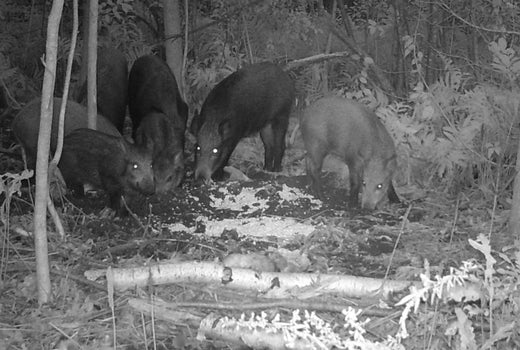
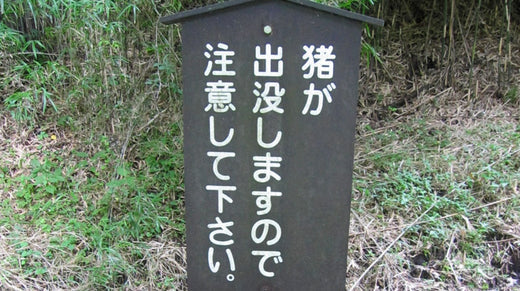
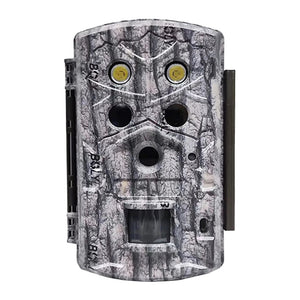
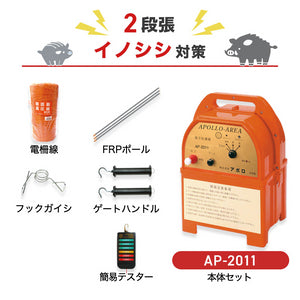
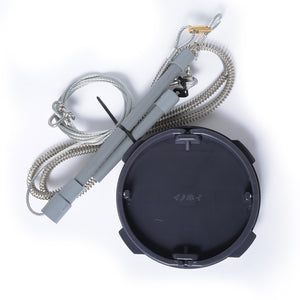
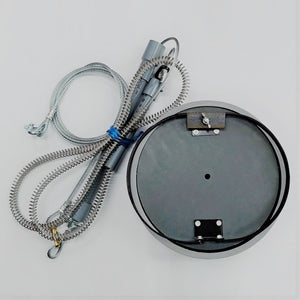
![Fare Asahi Shiki Box Trap Big Size [Double Door]](http://inohoi.jp/cdn/shop/products/20180504_5c53af_300x300_crop_center.progressive.jpg?v=1597991101)
![Fare Asahi Shiki Box Trap Big Size [Single Door]](http://inohoi.jp/cdn/shop/products/20180506_c693cd_e969a0f5-abac-49ee-8f2b-6de0f385e3fd_300x300_crop_center.progressive.jpg?v=1597991123)
![Fare Asahishiki box trap medium size [single door] wire mesh specification](http://inohoi.jp/cdn/shop/files/main_300x300_crop_center.progressive.png.jpg?v=1720764665)
![Fare Asahi Shiki Box Trap Medium Size [Single Door] Deep Type](http://inohoi.jp/cdn/shop/files/f9d83dbb4ed93f76265b8cd23c07b474_300x300_crop_center.progressive.jpg?v=1726117508)
 box trap
box trap
 tying trap
tying trap
 enclosure trap
enclosure trap
 Prevention and avoidance goods
Prevention and avoidance goods
 electric fence
electric fence
 trap surveillance camera
trap surveillance camera
 transportation goods
transportation goods
 Trap detection sensor
Trap detection sensor
 hunting supplies
hunting supplies
 hunting books
hunting books
 Anti-bird goods
Anti-bird goods
 Agricultural materials/machinery
Agricultural materials/machinery
 boar
boar
 deer
deer
 Kyon
Kyon
 monkey
monkey
 raccoon
raccoon
 Badger
Badger
 palm civet
palm civet
 raccoon dog
raccoon dog
 nutria
nutria
 mouse or rat
mouse or rat
 Mole
Mole
 bear
bear
 pigeon
pigeon
 Crow
Crow







